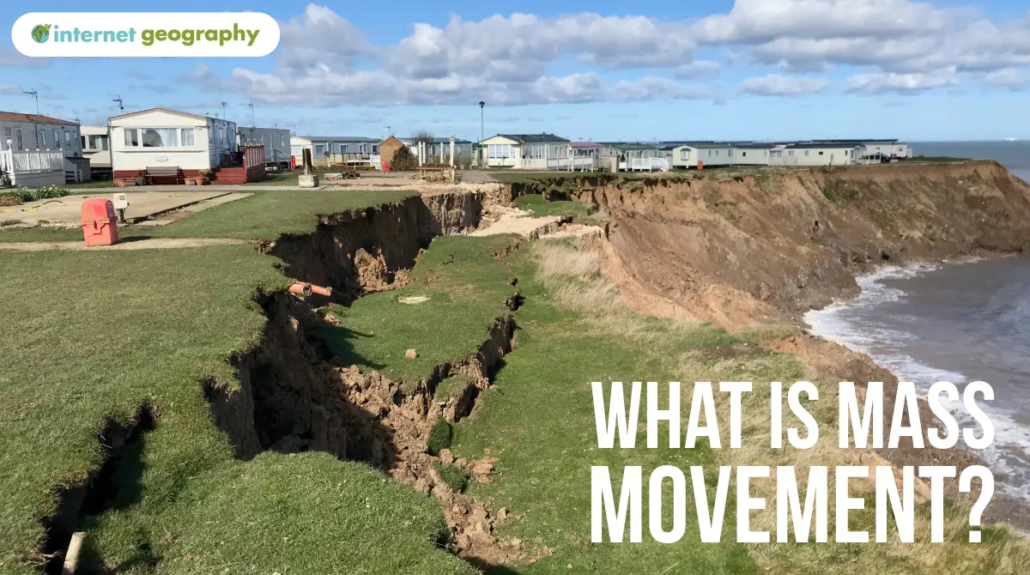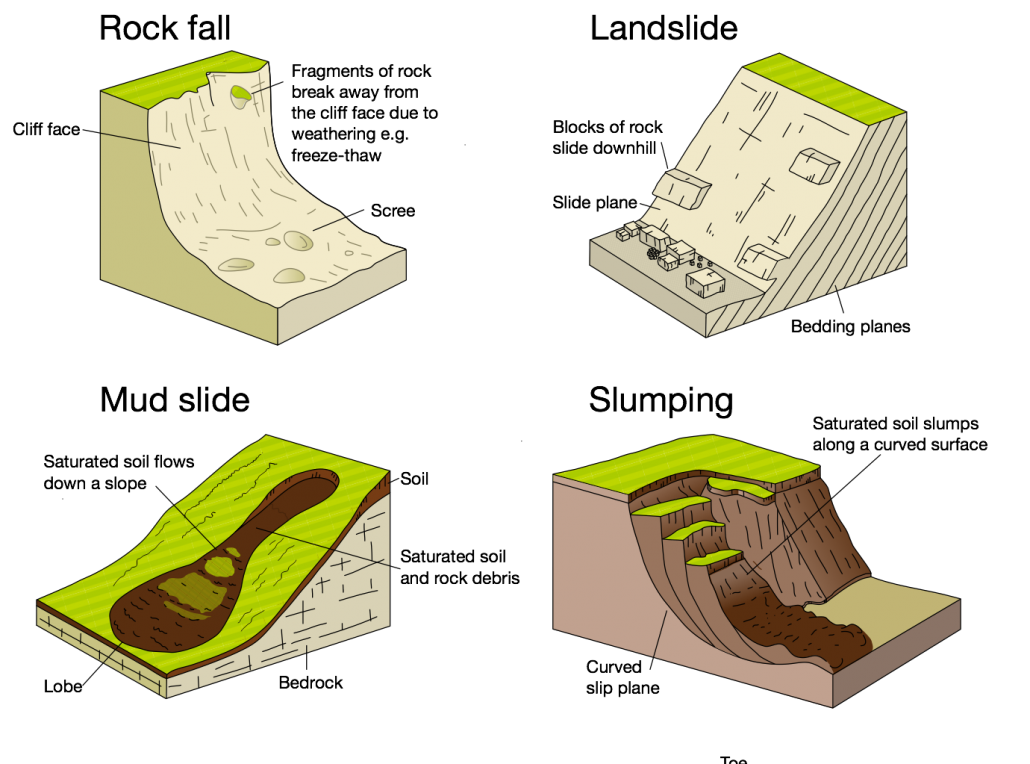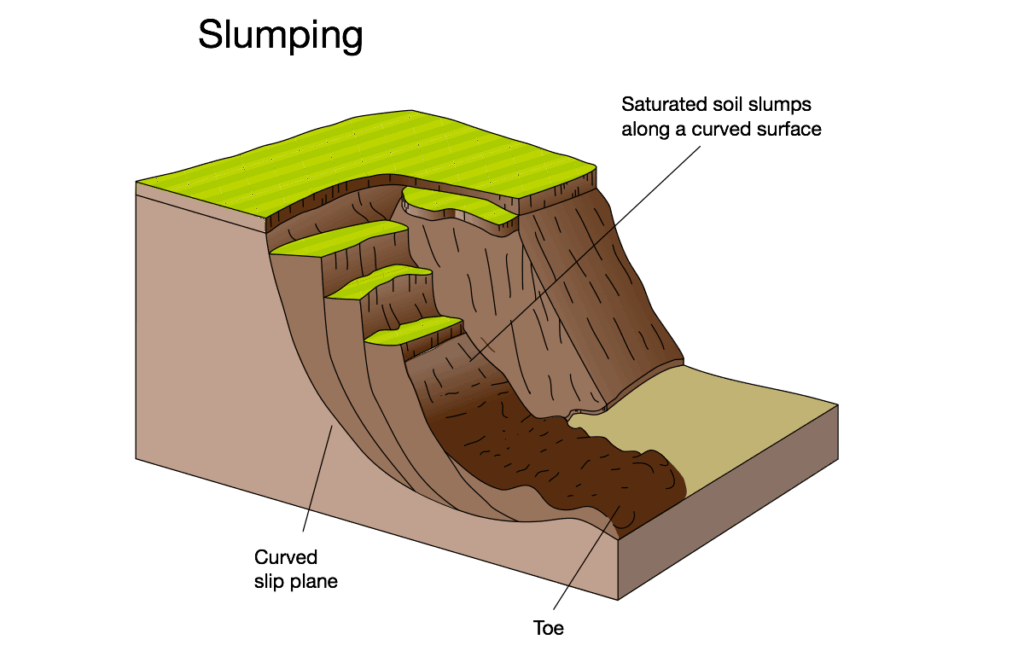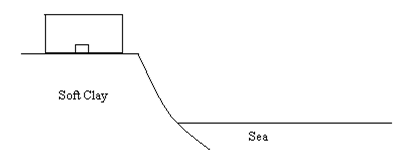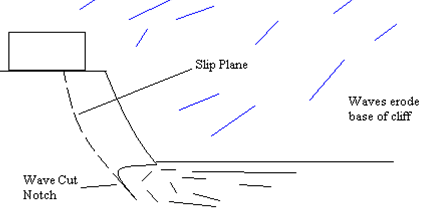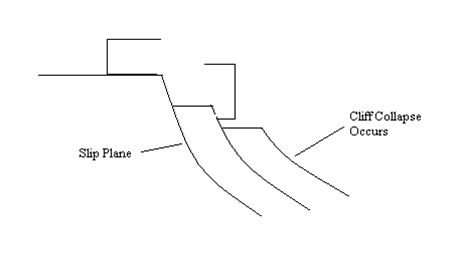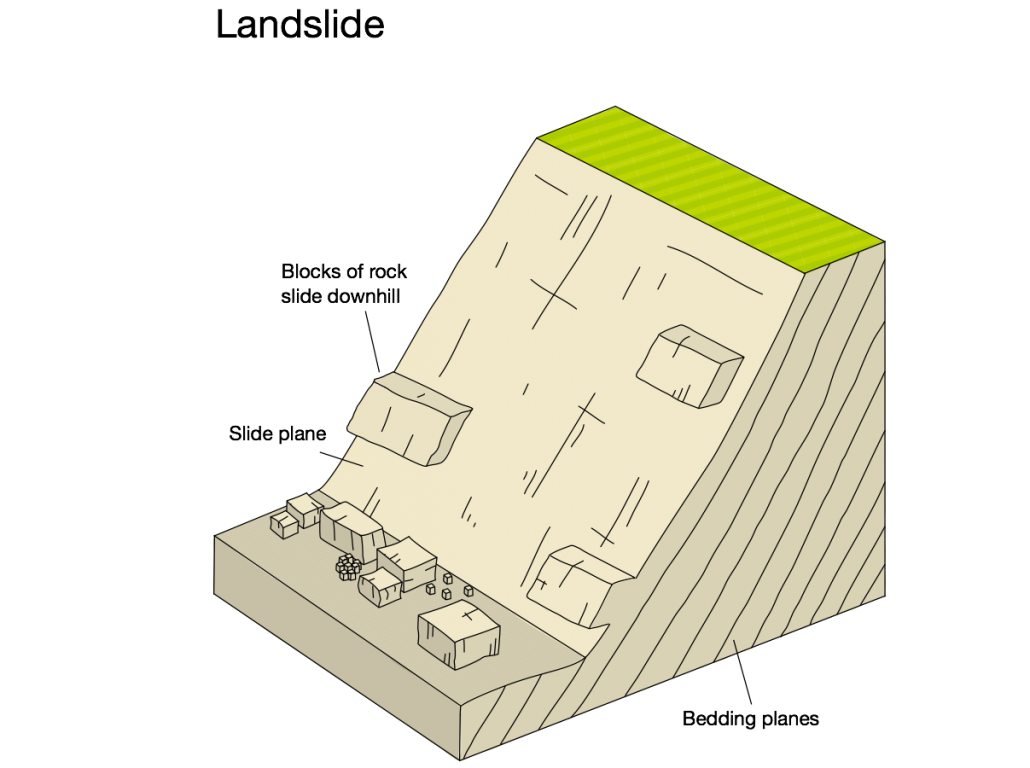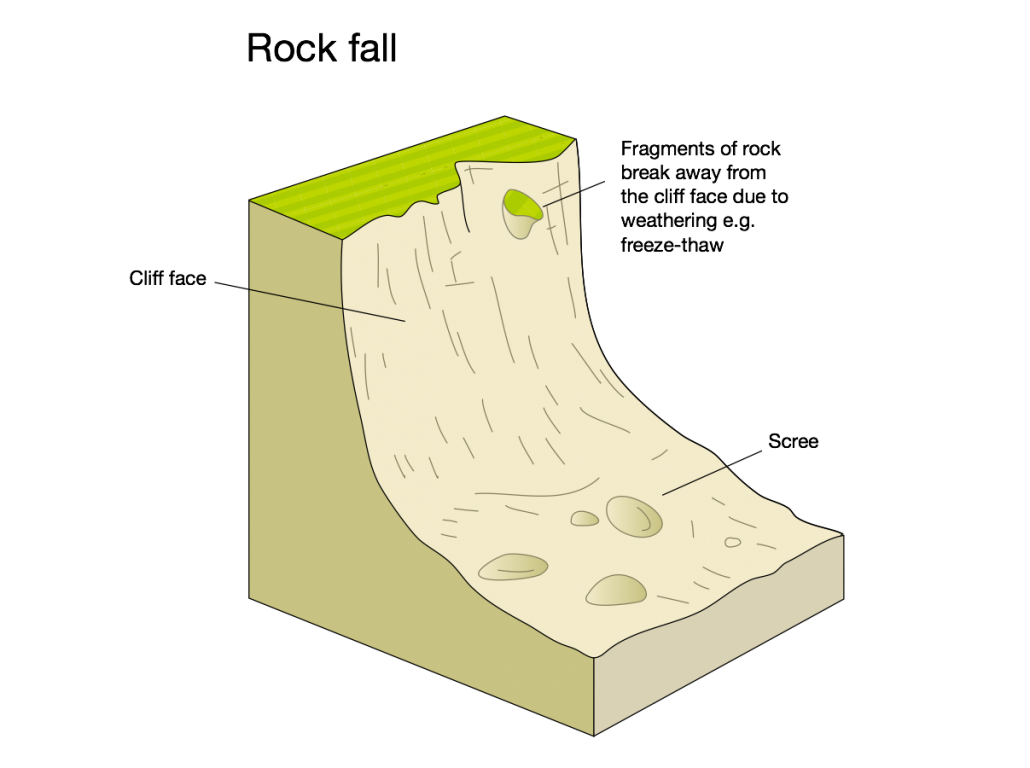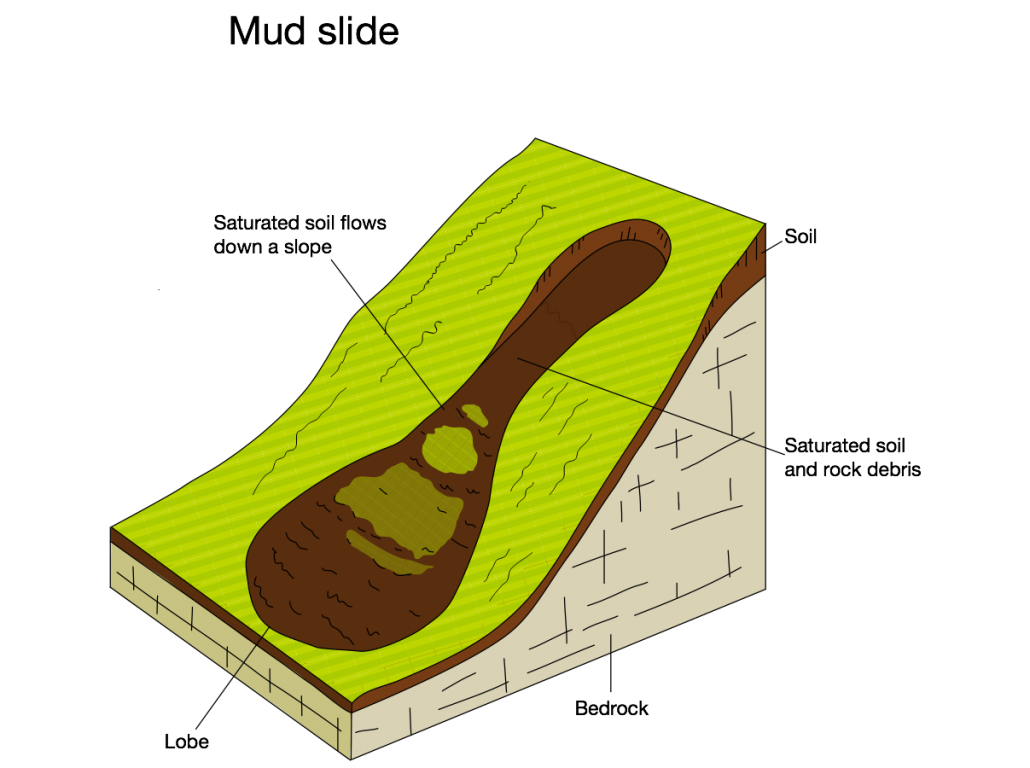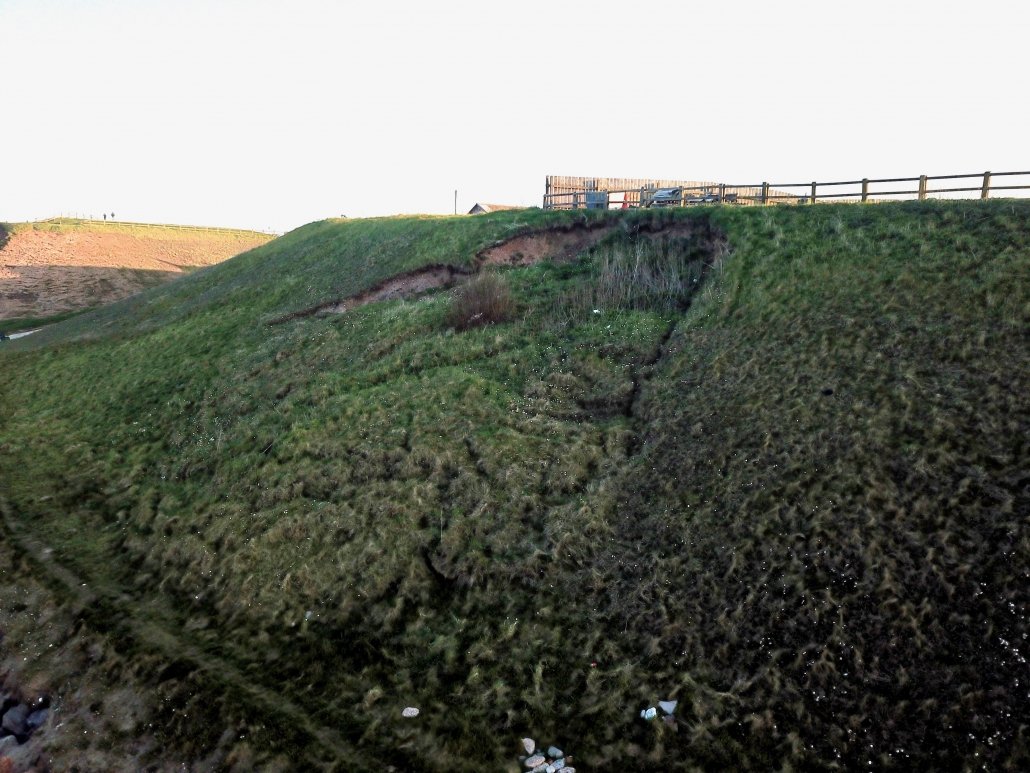What is Mass Movement?
Mass movement is the downhill movement of rock and soil under the force of gravity. It plays a significant role in shaping coastal landscapes by transporting eroded material down cliffs and onto the shoreline. There are several different types of mass movement, each influenced by the type of rock, water content, and slope angle. Four main types of mass movement occur along the coast: rockfalls, landslides, mudslides, and slumping.
Slumping (Rotational Slip)
Slumping occurs on cliffs composed of soft materials, such as boulder clay, often left behind by glaciers. These cliffs are vulnerable to both marine and subaerial processes.
How does slumping happen?
- Rainwater infiltrates and saturates the permeable clay, increasing its weight.
- Waves erode the base of the cliff through hydraulic action and abrasion, forming a wave-cut notch.
- A slip plane forms as the saturated material becomes unstable.
- The heavy clay slumps downward in a rotational motion along a curved slip plane.
- The slumped material flows onto the beach, creating a bulging toe at the base of the cliff.
Example of slumping
The Holderness Coast is Europe’s fastest-eroding coastline. Here, slumping is common due to the soft boulder clay cliffs. The video below shows evidence of slumping at Mappleton, Holderness Coast. The video shows the early stages of the process. Water will percolate down the large crack to lubricate the slip plane. This will cause the cliff to slump further down.
Landslides
Landslides involve large sections of cliff moving rapidly downhill along a straight slip plane. They often occur on cliffs made of resistant rock, such as sandstone or limestone, and are usually triggered by erosion and heavy rainfall. In areas of more resistant cliff material, erosion is most significant when waves break at the foot of a cliff. This causes erosion at the base of the cliff. This creates a wave-cut notch in the base of the cliff. As the notch increases in size, the weight of the cliffs above becomes too much to support, leading to a landslide. This material will provide temporary protection for the cliff behind. However, once the sea has removed it, this process will occur again. Wave-cut platforms will be created where cliffs are made of more resistant material.
How do landslides happen?
- Marine erosion at the base of the cliff (especially hydraulic power and abrasion) forms a wave-cut notch, removing support.
- Rainwater infiltrates the rock, adding weight and reducing internal cohesion.
- A straight slip plane develops as gravity pulls the weakened rock downward.
- The rock mass slides rapidly down the cliff face in large slabs.
- The fallen material accumulates at the base, temporarily protecting the cliff until it is removed by wave action.
Example of a landslide
In West Bay on the Jurassic Coast in Dorset, a large landslide occurred in 2012 following heavy rainfall. The sandstone cliff collapsed suddenly, blocking a coastal path and highlighting the risk of slope instability in resistant rock cliffs. The image below shows a landslide at West Bay, Dorset.
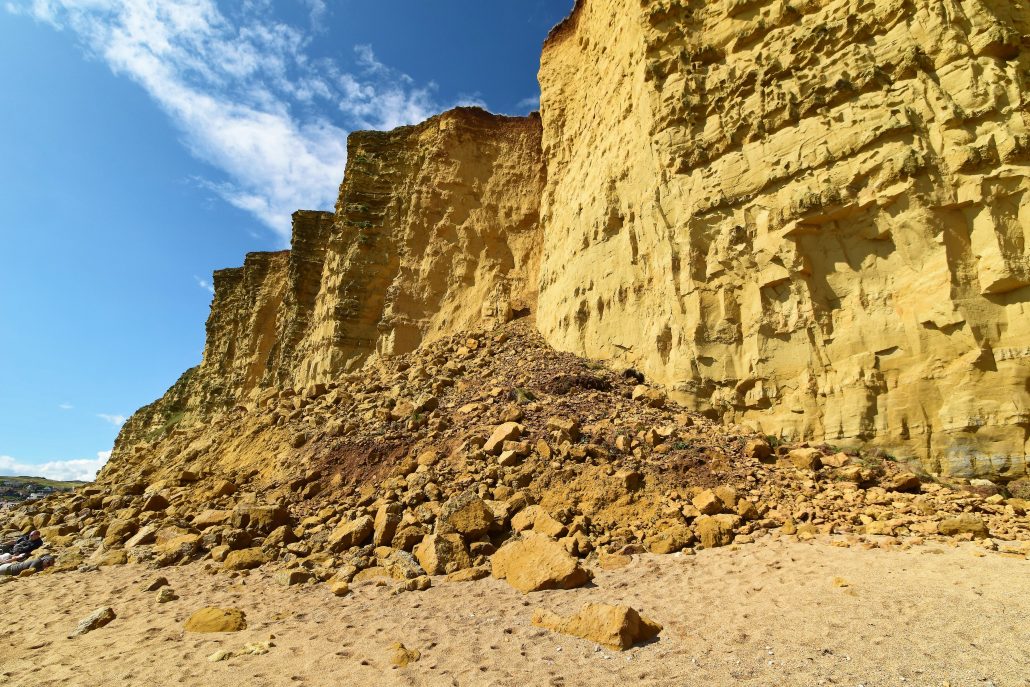
Landslide at West Bay on Dorset’s Jurassic Coast.
The video below shows evidence of a landslide at Port Mulgrave, Yorkshire and Cleveland Heritage Coast.
Rockfall
Rockfall occurs when fragments of rock break away from the cliff face and fall vertically or bounce down the slope. This is most common on steep or vertical cliffs composed of hard, jointed rock, such as limestone.
How do rockfalls happen?
- Weathering processes, especially freeze-thaw, widen joints and cracks in the rock.
- Water enters cracks during the day and freezes overnight, expanding and putting pressure on the surrounding rock.
- Repeated cycles of freezing and thawing weaken the rock structure.
- Eventually, rock fragments detach and fall under gravity.
- The fallen material collects at the foot of the cliff to form a scree slope or debris pile.
Example of a rockfall
At Port Mulgrave on the Yorkshire coast, frequent rockfalls have occurred due to freeze-thaw weathering acting on the exposed rock face. These events pose risks to coastal paths and access points.
A rockfall involves rock fragments breaking away from the cliff face, often due to freeze-thaw weathering.
The video below shows a series of rock falls above a landslide at Port Mulgrave, Yorkshire.
Mudslide
Mudslides involve the rapid downhill movement of saturated soil and weak rock, typically in the form of a flowing slurry. They often occur after heavy rainfall, particularly on cliffs made of boulder clay or other unconsolidated materials.
How do mudslides happen?
- Prolonged or intense rainfall saturates the loose soil and weak rock on a slope.
- As the water content increases, the material becomes heavier and less stable.
- The slope fails suddenly, and the saturated material begins to move.
- The mixture of soil and water flows downhill rapidly, following the natural gradient.
- The moving material forms a bulging, lobe-shaped deposit at the base of the slope or cliff.
Example of a mudslide
At Mappleton on the Holderness Coast, mudslides are common due to the cliff’s composition of glacial boulder clay. Heavy rainfall often triggers rapid movement of saturated material, threatening roads and property along the coast.
The image below shows a mudslide at Mappleton, Holderness Coast.
The video below shows evidence of a mudslide at Mappleton.
The video below shows evidence of a small mudflow at Hornsea, Holderness Coast.
You can view more videos on the mass movement video page.

